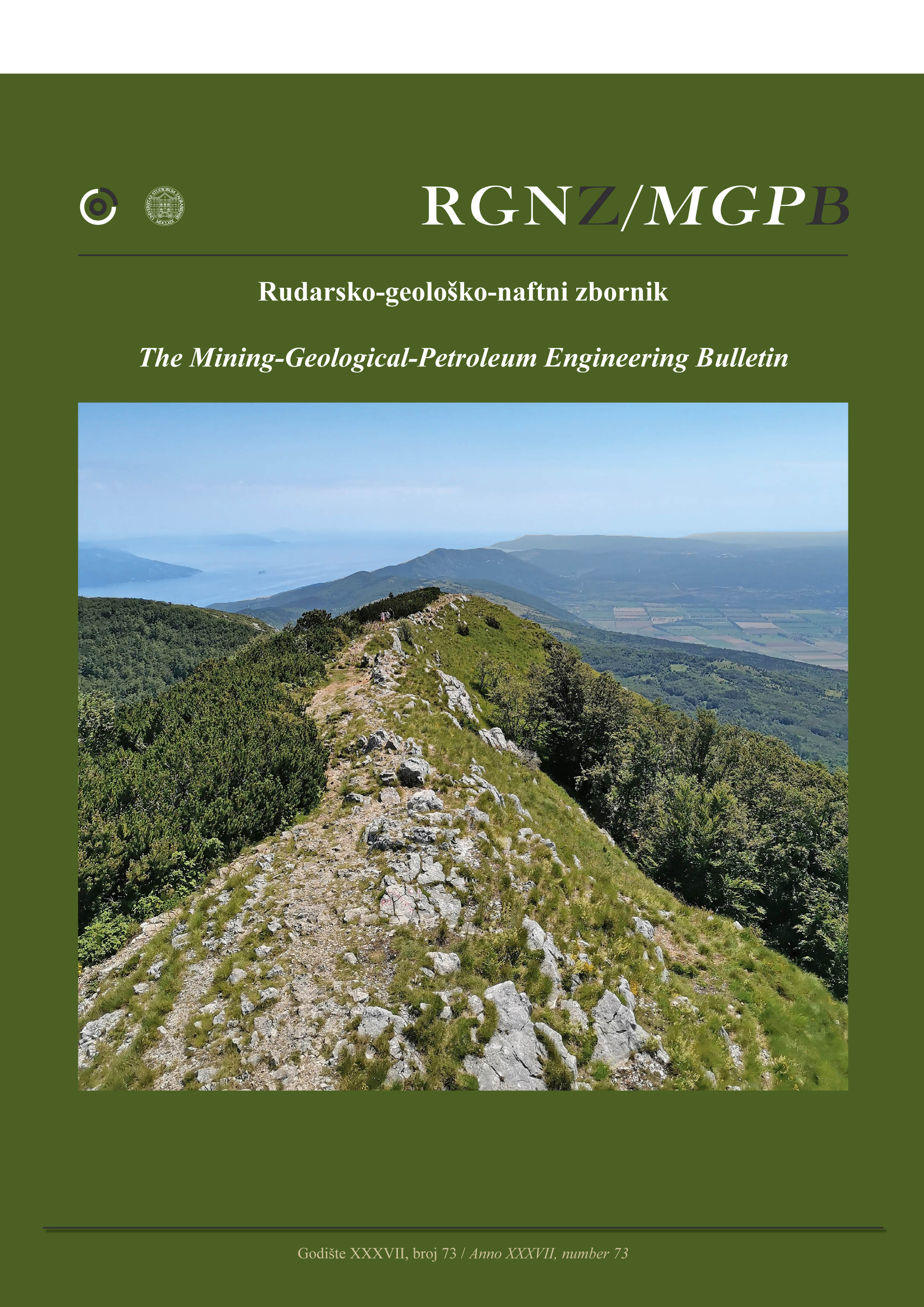Studying Pressure Variation in a Fractured Carbonate Reservoir Producing Under Steam Flooding EOR with Multiple Fracture Matrix Arrangements
DOI:
https://doi.org/10.17794/rgn.2025.2.6Keywords:
fractured reservoir, pressure, matrix-fracture, carbonateAbstract
The viscous oil reserves present around the world are estimated to be 2 trillion barrels, but to date, the lack of suitable technology for production causes these reserves present in complex reservoirs to negligibly contribute to world daily production. Most of these fractured reservoirs possess enormous heterogeneity due to high contrast between petrophysical parameters like porosity and permeability. Evaluating both the matrix and fractures is crucial for understanding these complex types of reservoirs. In oil and gas reservoirs, pressure is vital for maintaining the flow of hydrocarbons. Reservoir pressure helps push oil and gas through porous rock formations to production wells. The same pressure variation becomes very important during steam injection for recovering heavy oil from fractured carbonate reservoir. This study aims to capture pressure variation in different matrix-fracture arrangements. COMSOL Multiphysics® is used in this study, to map the pressure variation in a fractured carbonate reservoir producing under the steam flooding Enhanced Oil Recovery (EOR) technique. The results presented in this study reveal distinct pressure profiles for various fracture arrangements, including single horizontal & vertical fractures, closed loop arrangements, open loop arrangements, and irregular fracture networks. In a closed loop arrangement of matrix & fracture, pressure variations and compartmentalization effects are observed, necessitating precise management strategies to address isolated pressure responses. However, in an open loop arrangement, there are early pressure disturbances with dense fractures and delayed responses with wider fracture spacing, highlighting the influence of fracture density and spacing on fluid flow efficiency. This research contributes valuable insight for improved reservoir management.
Downloads
Published
Issue
Section
License
Copyright (c) 2024 Shantanu Pandey, Suresh Kumar Govindarajan

This work is licensed under a Creative Commons Attribution 4.0 International License.
Creative Commons-BY
Authors who publish with this journal agree to the following terms:
In agreeing this form, you certify that:
- You read the ethical codex of the RGN zbornik available at journal web.
- You submitted work is your original work, and has not previously been published and does not include any form of plagiarism.
- You own copyright in the submitted work, and are therefore permitted to assign the licence to publish to RGN zbornik.
- Your submitted work contains no violation of any existing copyright or other third party right or any material of an obscene, libellous or otherwise unlawful nature.
- You have obtained permission for and acknowledged the source of any illustrations, diagrams or other material included in the work of which you are not the copyright owner.
- You have taken due care to ensure the accuracy of the work, and that, to the best of your knowledge, there are no false statements made within it.
- All co-authors of this submitted work are aware of, and in agreement with, the terms of this licence and that the submitted manuscript has been approved by these authors.
Publication licence
You retain copyright in your submitted work, according to journal license policy (CC-BY). By signing this form you agree that RGN zbornik may publish it under the publication licence. In summary the licence allows the following:
Anyone is free:
- To copy, distribute, display, and perform the work.
- To make derivative works.
Under the following conditions:
- The original author must always be given credit.
- The work may not be used for commercial purposes.
- If the work is altered, transformed, or built upon, the resulting work may only be distributed under a licence identical to this one.
Exceptions to the licence
In addition to publishing the work printed under the above licence, RGN zbornik will also enable the work to be visible online.
The journal editorial can change the licence rules anytime but it cannot retroactively restrict author(s) rights.


